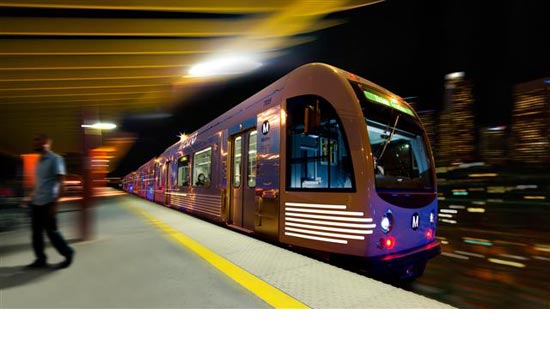Big step on subway’s long journey
September 10, 2010
And away we go.
After years of public meetings and study, the long-standing effort to bring a subway to the Westside of Los Angeles passed a key milestone today, with the release of a draft environmental impact statement spelling out potential routes to carry riders from the Mid-City area to Westwood.
The subway, an extension of Metro’s Purple Line and potentially the Red Line as well, will become a faster-moving transit alternative as traffic gridlock worsens in coming years, according to an executive summary accompanying the project’s Draft Environmental Impact Statement/Environmental Impact Report.
In justifying the need for the new subway, the report paints a grim picture of what the future might look like without one. By 2035, it projects 51,000 new residents and 58,000 new jobs in the area closest to the proposed subway. And that means more cars on clogged roadways and more people packed into buses, resulting in even slower commute times. Buses would slog along at 8 to 11 miles per hour and would add 29% more riders by 2035, the report said.
Even with the coming of the subway, the report promises very little in the way of easing roadway congestion. “The subway is not a silver bullet to cure all the traffic problems on the Westside,” said Metro spokesman Dave Sotero. But, he said, when combined with other improvements, it will offer a “fast, clean, reliable alternative to driving in traffic.”
Metro’s blog The Source did the math and found that what’s now a 54-minute cross-town odyssey from Union Station to Westwood using public transportation would become a 25-minute trip once the subway is built.
The subway also promises to open up a world of Westside offerings—from jobs to education to entertainment and culture—for people across the region.
The draft plan made public today sets out five possible routes for the subway. One begins at Western and moves west along Wilshire, stopping at stations at La Brea, Fairfax, La Cienega, Rodeo Drive, Century City and Westwood/UCLA. Another adds a station at the Westwood VA Hospital. Another goes further, running along Wilshire all the way to 4th Street in Santa Monica. Other alternatives would add stations in West Hollywood near the Beverly Center and along Santa Monica Boulevard, and would provide connections to the San Fernando Valley via the Red Line.
Some key decisions still must be made, however, including whether to build a station at Crenshaw and Wilshire, and where precisely to place many of the stations.
The public is invited to comment on the draft EIS/EIR in a series of meetings beginning later this month. The first will be held from 6-8 p.m. at LACMA on Sept. 20. A complete list of meetings and locations is here.
After a 45-day public comment period, the Metropolitan Transportation Authority’s board will decide at its Oct. 28 meeting whether to approve the draft report along with a “locally preferred” alignment. Then work will get underway on a final environmental report for the project, along with preliminary design work.
Depending on which route is selected, the project could cost from $4 billion to $8.7 billion, the report said. Getting the subway as far as Westwood could be funded with revenues from Measure R, the half-cent sales tax approved by voters in 2008, along with anticipated federal matching funds. Adding the West Hollywood or Santa Monica leg would require finding additional funding sources.
The federal government also is being asked to help accelerate the pace of building the subway under the 30/10 Initiative, in which local leaders are seeking to borrow against future Measure R revenues in order to fast-track major transit projects in the region. The infusion of federal dollars could allow the projects to be completed in 10 years, instead of 30.
Posted 9/03/10













 405 bridge work causes a stink
405 bridge work causes a stink

